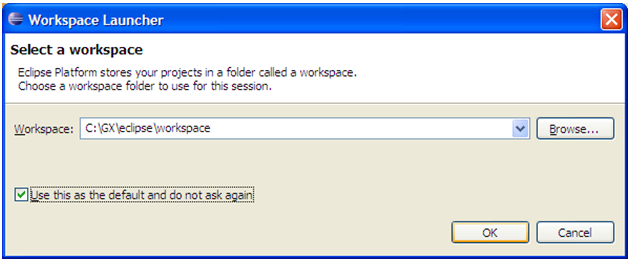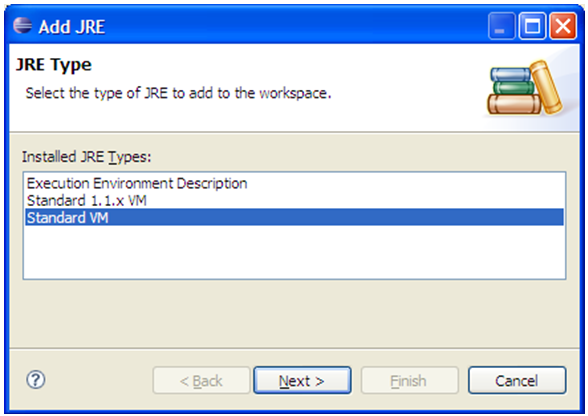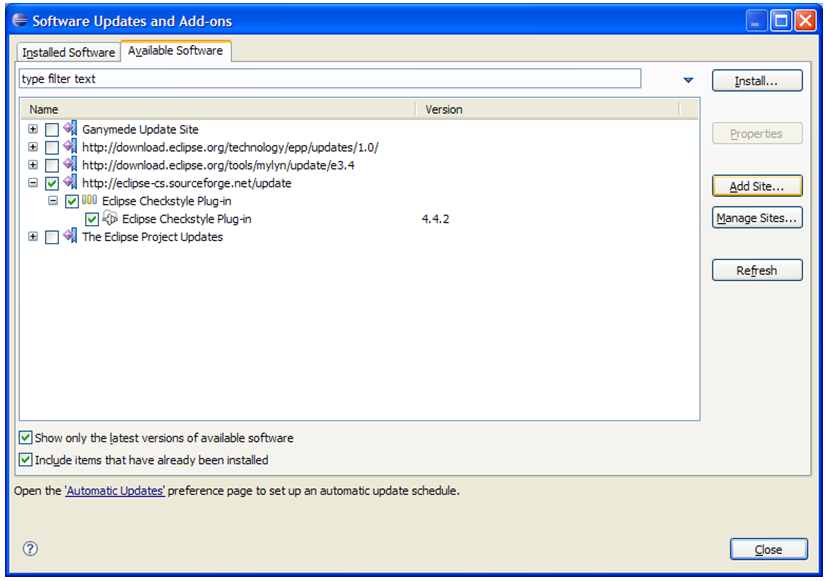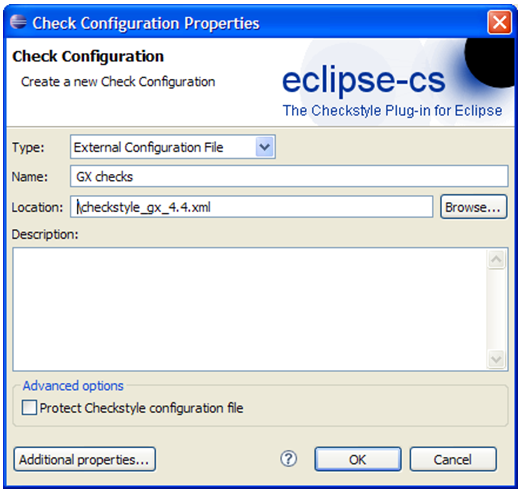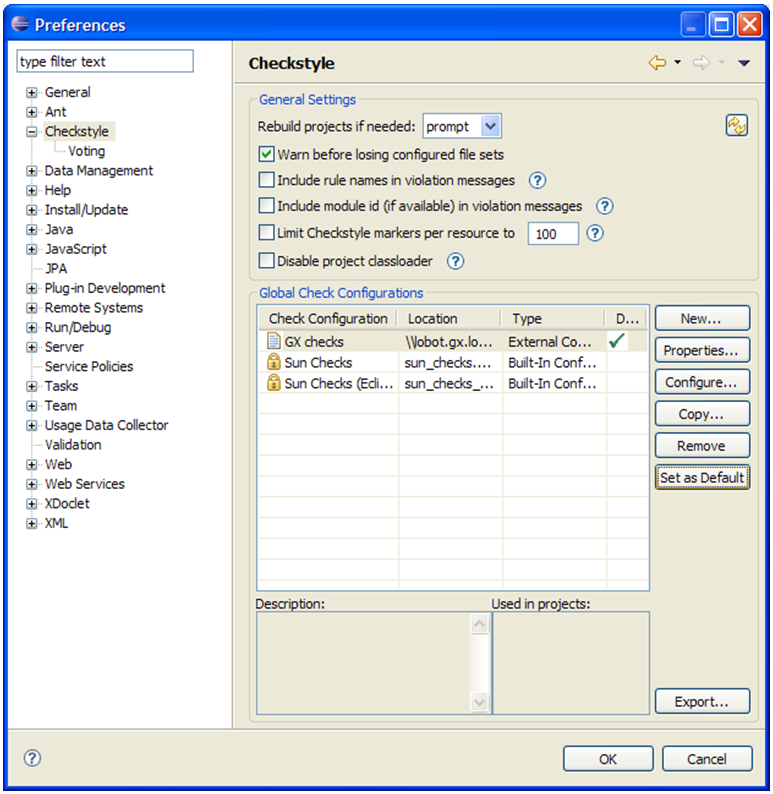...
| Table of Contents | ||
|---|---|---|
|
...
Eclipse is an Integrated Development Environment (IDE) for Java development. Plugins from Eclipse can make Eclipse also suitable for the development of other languages. There is, for instance, a C development environment based on Eclipse.
Installing Eclipse
A Java Development Kit (JDK) must be available in order to run Eclipse. This quick start guide assumes you are installing the JDK referenced in the XperienCentral Hardware and Software Requirements. The JDK is available from http://java.sun.com/javase/downloads/index_jdk5.jsp.
- Download Eclipse from http://www.eclipse.org/downloads/.
- Create the folder
C:\GX\and unpack the downloadedeclipse-(…)-win32.zipfile to this folder. TheC:\GX\eclipsefolder is generated. When the installation is complete, Eclipse can be started by double-clicking theC:\GX\eclipse\eclipse.exeexecutable. Select a workspace or create one. For example:
Note Throughout the instructions appearing in this topic, the example workspace shown above isn’t used. This step is only necessary because Eclipse requires you to define a workspace.
Continue with the rest of the configuration and then close this tab.
...
Configuring Eclipse
In the Window > Preferences > Java > Installed JREs menu, verify that Eclipse uses the Java Software Development Kit (j2sdk) as a default and not the Java Runtime Environment (JRE) (if necessary, the j2sdk can be added using the [Add] button):
| Note |
|---|
If the Java Software Development Kit is not selected by default, a message appears when you create a project warning you that the tools.jar cannot be found. This must be set correctly before defining a project or the project will have to be discarded and you must start all over again. |
...
...
| Anchor | ||||
|---|---|---|---|---|
|
...
- Name: M2_REPO
- Path (folder): C:\GX\xperiencentral\maven2-repository
...
| Anchor | ||||
|---|---|---|---|---|
|
...
Key: http://www.gxsoftware.com/taglib/functions
If your Eclipse installation does not include the standard JSTL and Spring taglibs you can add the following useful tags:
...
Key: http://java.sun.com/jsp/jstl/fmt
...
| Anchor | ||||
|---|---|---|---|---|
|
After installing the Guideline audit plugin XperienCentral, these files can be downloaded from Configuration > Guideline audit > ConfigurationThe configuration files mentioned below are available as attachments to this page.
| Anchor | ||||
|---|---|---|---|---|
|
...
- Navigate to Help > Software Updates > Available software.
- Choose Add site.
- Input the following URL: http://eclipse-cs.sourceforge.net/update.
- Select the Eclipse Checkstyle Plug-in and click [Install].
Navigate through the subsequent pages to install the plug-in.
Restart Eclipse.
...
After installed configure the plug-in as follows:
- Navigate to Window > Preferences > Checkstyle.
- Click [New].
- Select an external configuration.
- Select a name (“GX checks” for example), and set the location to the attached
GX-checkstyle.xmlfile and click [OK]. - Select the new configuration in the list and click [Set as default] and then click [OK].
